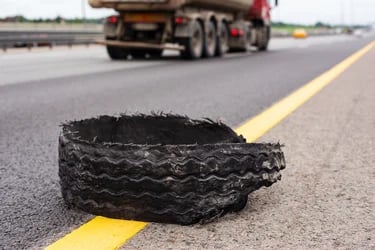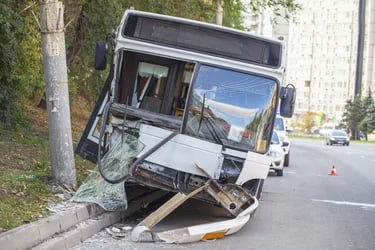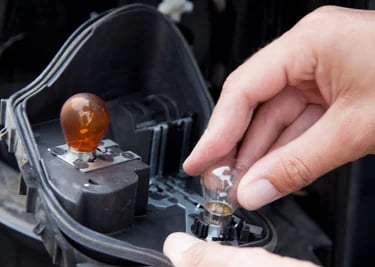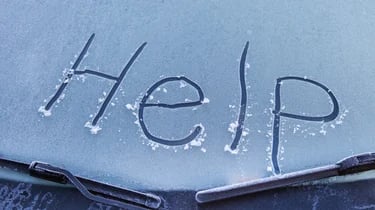 Private car drivers and commercial transportation truckers alike share our highways. This combination of driver skills and behaviors is an increasingly dangerous mix. Since 2015 there has been an increasing trend in highway fatality numbers. The recent U.S. Department of Transportation’s National Highway Traffic Safety Administration report elaborates on the true meaning of one of the more minor statistical causes, mechanical failures. While the impact they indicate is anything but small, the good news is that it is far more preventable than currently practiced.
Private car drivers and commercial transportation truckers alike share our highways. This combination of driver skills and behaviors is an increasingly dangerous mix. Since 2015 there has been an increasing trend in highway fatality numbers. The recent U.S. Department of Transportation’s National Highway Traffic Safety Administration report elaborates on the true meaning of one of the more minor statistical causes, mechanical failures. While the impact they indicate is anything but small, the good news is that it is far more preventable than currently practiced.
According to a Crash Stats Report, 94% (or 2,046,000) of motor vehicle accidents are attributed to decisions made by one or more drivers. In that same causality report, mechanical failure is only attributed to 2% (or 44,000) of accidents. With such a minimal causality ratio for accidents, why focus on ones caused by mechanical failure? Because, as noted by the NHTSA, that 2% figure is inaccurate, “the vehicle-related critical reasons were mainly inferred through external visual inspection of the vehicle components. Therefore, the related statistics may not represent the role of the other internal vehicle-related problems.” In a nutshell, mechanical failures are a bigger problem than historical data collection methods suggest.
Top 5 mechanical failures that cause accidents:
A) Critical Causes
Failure #1: Tires/Wheels
A recent Crash Stats report indicates “the tire problem accounted for about 35 per cent (±11.4%) of the crashes”, where vehicle failures were the cause of the crash.
Two of the most common problems from tires are blowouts and worn tires.
1. Tire blowouts . Blowouts happen for many reasons, including a tire suddenly bursting under pressure from worn out, under or over-inflation, tires being punctured by roadside junk, or even rapid, extreme temperature changes. Blowouts quickly reduce a driver’s ability to control the vehicle.2. Worn tires . Time on the road contributes to wear and tear on tire treads. This compromises tire grip—particularly in inclement weather (snow, rain, etc.), making them more likely to slip, take more distance to brake, and be less responsive due to their weak grip on the road, all contributing to accidents.
Failure #2: Brakes
The crash stats report tells us, “brake-related problems… accounted for about 22 percent (±15.4%)” of crashes…” The most common being rear-end collisions. Bad brakes are a major factor in the driver to stop in time to avoid ramming right into the vehicle in front.
Frequent factors contributing to brake-related accidents include:
- Faulty/Worn Brake Lines. Leaky brake lines allow brake fluid to drain away, rendering brakes useless.
- ABS Malfunctions. An Anti-lock Brake System (ABS) is designed to prevent the wheels from locking up when the brakes are pressed hard. This minimizes slipping and loss of control. Any problems with ABS can increase slipping.
- Worn Brake Discs & Pads. The braking assembly in your car wears out with time and use. This wearing down makes it harder to stop your vehicle, resulting in longer stop distances and increased accident risks.
Failure #3: Steering, Suspension, Transmission…
The third most critical cause of accidents cited in the NHTSA report was a combination of “steering/suspension/transmission/engine-related problems.” They accounted for only 3 per cent of the crashes cited in the report, but this is where the results get interesting. These issues are seldom cited as the definitive cause for an accident because they’re harder to identify post-crash. Blown tires & worn brakes are easy to spot, but damage to the suspension caused by wear and tear is more brutal to sort out from the damage incurred in the crash.
Problems with your steering or suspension may diminish control over your vehicle at inopportune moments. A poorly functioning transmission or engine might prevent you from quickly accelerating when most needed. Regularly scheduled maintenance is necessary to minimise steering and suspension issues that could cause a crash. The Preventive Maintenance module of your FMS should alert you to when your vehicle’s due for a full inspection, and it will also hold information from previous maintenance calls that you can share with the mechanics to help focus repairs where most needed. On this point, getting a clear report in your FMS is essential to know if there are any issues with your steering, suspension, transmission, or engine. An OBD-II system check should give you error codes of varying degrees of importance, and the mechanic can add these items and any that have been repaired to the report. Ask us how SM2-Maintain can help you with this.
B) Additional Causes
The previous three causes of road accidents are the most reported ones when it comes to vehicle failures. However, that still leaves about 40% of vehicle failure accidents with unknown causes. The NHTSA report lumps these into an unknown mechanical failure grouping without many breakdowns. The common factors in them all are that they affect the driver’s field of vision and reaction times. At this point in time, the responsibility of catching these before they become primarily problematic lies in the hands of the driver. He/she must track them and report them for corrective maintenance. While some vehicles may have onboard computers that can capture and notify these issues, it may still be a while before that becomes standard. Here, a fleet manager would do best to train their drivers in reporting the incidents and keep extra detailed notes in their preventive maintenance systems. Ask us how SM2-Maintain can help you with this.
Failure #4: Headlights/Taillights
Seeing other vehicles on the road in low visibility conditions, such as nighttime, foggy roads, or during storms becomes much harder. Headlights and taillights increase visibility, showing you more of the road and helping other drivers to see your vehicle better. A broken taillight makes your truck less visible in poor weather and could increase the chances of getting rear-ended or sideswiped.
Even on a clear day, vehicle lights are essential. Turn signals show other drivers you’re preparing to change lanes or turn, and brake lights tell them you’re stopping or slowing down. Working lights alert other drivers of your impending actions and allow them to drive safer and tell others of your actions. E.g. When a car brakes in front of us, we do too because we see their lights first.
Failure #5: Windshield Wipers
Never underestimate the importance of your windshield wipers. When it’s raining hard, snowing, or getting the dirty spray from other cars in the spring, visibility is significantly reduced. Using hazard lights may not always be an option if they are illegal in your state (e.g. Florida). You have to stick with your windshield wipers to clear rain and dirt from the window, so you can see where you’re going a bit better. So, keeping them in good working order is very important. Check with your vehicle manufacturers or mechanics for the best blades for you.
Worn-out wiper blades leave streaks that continue to block your sight, and those are simpler to replace. However, if the wiper motors break, the sudden vision loss may be alarming enough to cause an accident. Check your windshield wipers as often as possible, depending on the conditions where you drive. Keeping spares is always advisable. Also, check your wiper fluid and top it off whenever possible with the best type for the season. Finally, keep track of when you make blade changes and fluid replacements in your maintenance logs to help your fleet manager plan.
Prevention is the best medicine
Remember, while mechanical failures are not always detected, much less cited as the critical reasons for an accident in most cases, they can still be contributing factors. The best protection is to plan and adhere to a preventive maintenance program and to drive carefully. Unfortunately, accidents may still happen to the best drivers in the most well-maintained vehicles. To learn more about the ways to minimize preventable accidents caused by mechanical failure, please contact us about your specific challenges. We are always ready to help and very confident SM2 Maintain will solve your needs.
#safety #fleetsafety #preventivemaintenance #fleetmanagement #dedicatedtosafety
